Remake rates in crown and bridge production aren’t just an operational nuisance—they’re a direct reflection of a lab’s quality systems, design accuracy, and ability to collaborate under pressure. For procurement professionals, recurring remakes introduce hidden costs, disrupt scheduling, and erode trust in the supply chain.
Evaluating a dental lab’s remake and QA processes requires more than asking for average rates. It’s about understanding how issues are prevented, how they’re resolved, and whether the lab has the infrastructure to support long-term reliability. Clear communication, digital traceability, and root-cause alignment are key indicators of operational maturity.
This guide outlines seven critical areas to examine when assessing a lab’s readiness to reduce remakes and maintain consistent delivery quality:
- Identify common remake triggers—and how labs distinguish between clinical and lab-side causes
- Verify QA checkpoints across production stages for fit, shade, and margin validation
- Assess how remake cases are logged, categorized, and analyzed over time
- Clarify remake policies: expected turnaround time, documentation required, and fee structure
- Understand communication workflows for root-cause confirmation and issue resolution
- Explore collaboration protocols that improve first-time success through better data and submissions
- Ask strategic questions to benchmark a lab’s QA visibility and problem-solving model
These insights help procurement teams move beyond reactive remake handling—and toward proactive, quality-driven partnerships in crown and bridge manufacturing.
Why Do Remakes Happen in Crown and Bridge Restorations?
Remakes in crown and bridge cases are often rooted in a combination of design complexity, material behavior, and the collaborative handoff between clinic and lab. While all restorations carry some risk of adjustment, crown and bridge work introduces more variables, making it more prone to remakes if workflows aren’t tightly controlled.
Most remakes stem from three major areas: marginal fit issues, shade mismatches, and occlusal discrepancies. In multi-unit cases, even small deviations compound, raising remake likelihood if design, scan, or communication quality is compromised.
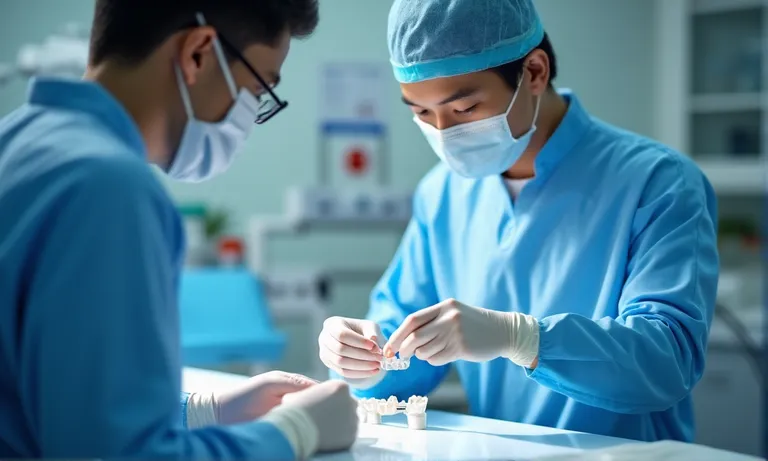
crown-bridge-remake-causes-visual
What are the most common reasons for remakes in lab-fabricated crowns and bridges?
- Poor marginal fit: Often caused by incomplete margin capture or inconsistencies in scan data, especially at interproximal sites.
- Shade mismatch: Can result from inaccurate shade communication, lighting inconsistencies, or differences in material translucency.
- Occlusal errors: Common in multi-unit bridges where design articulation or antagonist modeling was insufficient.
- Inconsistent prep or scan data: Leads to improper emergence profiles or anatomical fit.
- Insufficient case details: Missing bite registrations, unclear Rx instructions, or lack of stump shade data contribute to avoidable remakes.
How do crown and bridge cases compare to single-unit cases in terms of risk?
| Case Type | Complexity Level | Common Risks | Remake Risk Level |
|---|---|---|---|
| Single-unit crown | Low | Margin or shade issue | Low |
| 3-unit bridge | Medium | Interabutment misfit, occlusion discrepancies | Medium |
| Full-arch bridge | High | Accumulative error, passive fit, aesthetic zone | High |
How can buyers distinguish lab-related errors from clinical issues?
While the source of a remake can sometimes appear ambiguous, consistent documentation can help buyers and labs distinguish root causes:
- Lab-related indicators:
- Repeat deviations in margin fit despite proper prep
- Frequent adjustments required for passive fit
- Inconsistent results across similar cases
- Clinically-related indicators:
- Incomplete impression or scan
- Ill-defined margins
- Prep undercuts or excessive taper
One of our lab partners once flagged a recurring issue with shade mismatch in anterior zirconia cases from a single client. Upon review, it was discovered the scans were consistently taken under ambient yellow lighting, affecting both shade mapping and translucency expectations. After jointly adjusting the scanning protocol and referencing shade tabs under calibrated lighting, remake rates for that client dropped by 63% in three months.
This shows that remakes aren’t just lab errors—they’re often a symptom of weak links in the overall communication loop.
What Quality Control Systems Should Labs Have to Prevent Remakes?
Preventing remakes in crown and bridge production hinges on whether a lab has implemented structured, multi-stage quality control—not just final inspections. High-performing labs embed QA checkpoints throughout the workflow, from scan validation to shade review, ensuring that errors are intercepted before becoming costly remakes.
K Labs should apply QA protocols across digital and physical stages—validating scan files, margin clarity, occlusion, design approval, material checks, and final shade accuracy. When done consistently, this dramatically reduces remake rates and supports scalable collaboration.
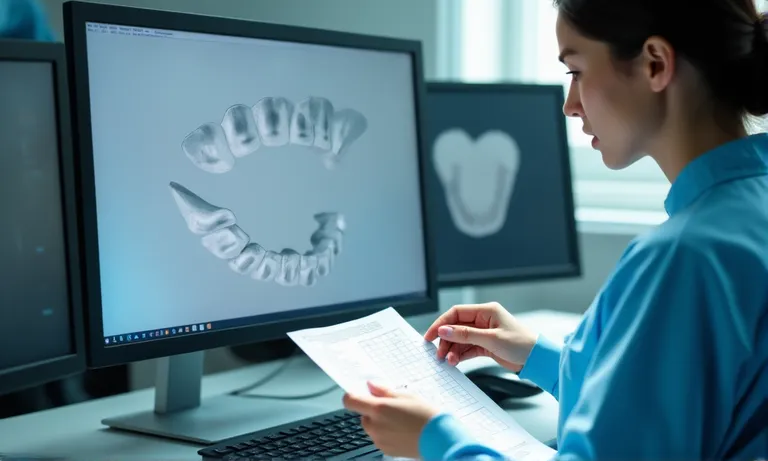
dental-lab-qa-multistage-checklist
At which production stages are quality checkpoints implemented?
- File Intake Validation:
- Confirm STL file integrity, scan completeness, and prep visibility.
- Check for margin clarity, interproximal contact zones, and bite registration accuracy.
- Design QA:
- Use CAD preview tools to check emergence profile, occlusion, and pontic design before internal approval.
- Cross-reference Rx form for material type, shade, and design notes.
- Pre-Milling Verification:
- Ensure CAM nesting is aligned with margin and path of insertion.
- Material block type, batch, and shade are double-confirmed before cutting.
- Post-Mill and Pre-Sintering Inspection:
- Dry fit the milled units on 3D-printed model (if applicable).
- Review for margin chipping or internal surface anomalies.
- Final Check (Post-Sintering/Polishing):
- Verify margin integrity, shade match, and contact points against provided case photos or model.
- All units must pass a final checklist before being packaged for delivery.
What are the standardized verification processes for fit, margin, and shade quality before shipment?
| QA Dimension | Verification Method | Tools Used |
|---|---|---|
| Margin Accuracy | Digital overlay + physical inspection | 3Shape CAD viewer, microscope |
| Occlusion | Articulated model + CAD contact map | Virtual articulation, shim stock testing |
| Shade Match | Visual comparison + tab photo confirmation | Shade guide, daylight lamp, photo tool |
Clear standards at each point help avoid subjective decisions and ensure consistency even across different technicians or shifts.
Does the lab use a digital QA checklist or inspection protocol?
Yes—and this is where forward-looking labs differentiate themselves. A digital QA checklist ties each verification step to traceable records, especially valuable when analyzing remake trends or discussing a case with the client.
For example, at Raytops, our crown and bridge QA system integrates with 3Shape and internal ticketing. If a technician flags a concern during design review (e.g., unclear margin), it gets recorded in the QA log and prompts a halt until clarification is received. This not only prevents unnecessary remakes but also helps train junior staff using real-world cases.
Labs that rely solely on technician memory or manual notes risk inconsistency and miscommunication. A shared digital log enables faster audits, better customer conversations, and ultimately fewer remakes.
How Do Labs Track and Analyze Remake Cases Over Time?
Tracking remake data is not just a reactive process—it’s a strategic tool for driving lab-wide quality improvement. High-performing labs don’t just log remake events; they categorize, analyze, and act on them to reduce repeat errors and align better with client needs.
Labs should maintain detailed, categorized remake records (fit, shade, occlusion, etc.), generate periodic reports, and translate findings into process or training improvements. This supports transparency and helps clients assess lab consistency over time.
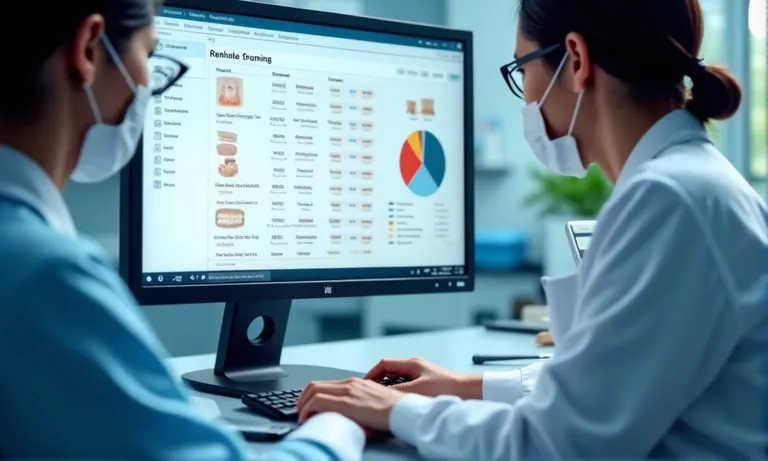
dental-lab-remake-analysis-dashboard
Are remakes logged by type and cause (fit, occlusion, shade mismatch)?
Yes—and cause-level logging is critical. Simply recording “remake requested” isn’t enough. A lab that tracks root cause by category offers far more insight into systemic weaknesses.
| Remake Category | Common Examples | Data Captured |
|---|---|---|
| Fit Issues | Marginal gaps, high occlusion | Scanner type, prep style, design version |
| Shade Mismatch | Wrong tab, lighting inconsistency | Shade guide ID, light temp, photo method |
| Design Errors | Improper contacts, pontic underbuild | Designer ID, version history |
| Technical Flaws | Material cracks, sintering deviation | Batch no., furnace ID, time logs |
Labs like Raytops tag remake requests using internal ticketing systems connected to each case’s unique ID, making it easy to analyze patterns across clinics, scanner models, or prep types.
Does the lab provide trend reports or remake rate summaries?
A reliable lab should share monthly or quarterly summaries, showing both overall remake rate and top reasons. This isn’t just helpful—it builds trust and gives clinics a reference point to assess collaboration efficiency.
Raytops shares remake summaries upon request, segmented by product type (e.g., layered vs. monolithic zirconia) and scanner used. One client in Ontario used this data to identify that 68% of their remakes stemmed from scan margin clarity—prompting a workflow adjustment on their side that dropped remake requests by 40% the next quarter.
How is this data used to reduce future quality issues?
Data isn’t the end—it’s the beginning of targeted improvement. Labs can use remake analytics in three ways:
- Training: If margin errors spike under one technician, targeted coaching or double-checks can be added.
- Process Tuning: Frequent sintering issues on certain products may lead to a protocol update.
- Client Collaboration: Sharing findings with the clinic (e.g., recurring impression issues) helps align both sides.
Ultimately, remake tracking systems are not just for lab use—they become part of the client success loop. Labs that proactively use this data to improve consistency, like Raytops, demonstrate a commitment to shared outcomes—not just output.
What Is a Typical Lab Remake Policy for Crown and Bridge Cases?
Understanding a lab’s remake policy is crucial for procurement teams. A vague or inconsistent policy can create frustration, delays, or hidden costs. A well-defined remake policy clarifies expectations on responsibility, turnaround time, documentation, and cost-sharing—especially important for complex crown and bridge cases.
Labs should have a clearly documented remake policy that specifies eligibility, required documentation, turnaround timelines, and conditions under which fees may apply. This allows clinics and procurement teams to evaluate service reliability and risk control.
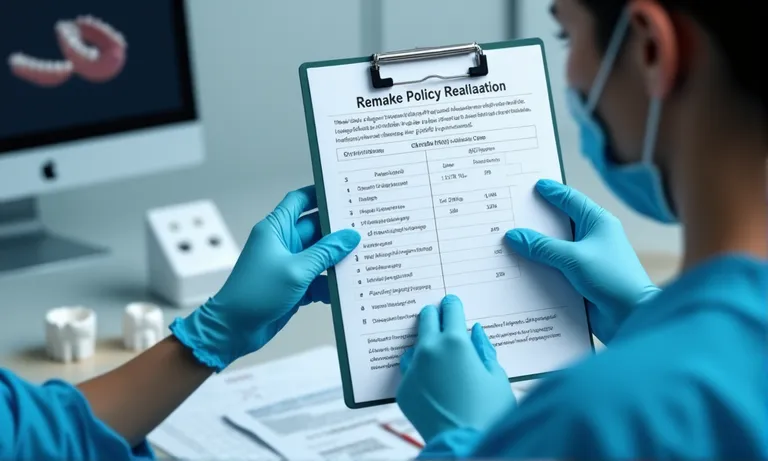
dental-lab-remake-policy-chart
Under what conditions is a remake free, partially charged, or excluded?
| Condition | Remake Cost | Notes |
|---|---|---|
| Lab-induced error (fit, margin) | ✅ Free | Requires supporting files and original case reference |
| Minor shade adjustments | 🟡 Partial charge | Depending on client instructions vs original Rx form |
| Clinical prep/design issue | ❌ Excluded | Poor impression, unclear margin, insufficient occlusal clearance |
| After 30-day delivery window | ❌ Excluded | Most labs set a remake request time limit (e.g., 30–45 days) |
| Material batch difference only | 🟡 Partial charge | If esthetics vary but original specs were met |
Most well-structured labs, including Raytops, aim to resolve remake requests fairly. Our remake form includes a checklist to confirm original design, shade, margin files, and client feedback, which helps clarify liability and speed up resolution.
What documentation is required to request a remake?
To ensure fair and timely processing, labs typically require the following:
- Original STL design or scanned model
- Rx form and technician notes
- Clinical photo (if esthetics or margin are disputed)
- Clear description of the issue (shade mismatch, margin gap, etc.)
- Delivery date and case ID
A remake request missing these items may be delayed or denied—not because of policy inflexibility, but to ensure accurate assessment and avoid repeating errors.
What is the average turnaround time for remake cases?
Remake timelines vary by case type and material. Based on industry norms and our lab’s data:
| Case Type | Typical Remake Turnaround |
|---|---|
| Single-unit zirconia crown | 3–4 working days |
| Multi-unit posterior bridge | 5–6 working days |
| Implant-supported full arch | 7–10 working days |
Rush remake options may be available but typically require pre-approval and are offered at partial or full cost. Labs should clarify whether remake cases get production queue priority or follow standard lead times.
How Are Remake Communications Managed Between the Lab and Client?
Effective communication is key to resolving remake requests quickly and fairly. Labs that establish clear feedback channels and structured communication workflows can reduce misalignment, accelerate issue resolution, and preserve trust—even when things go wrong.
Labs should offer traceable, timely, and structured remake communication processes. This includes visual documentation review, dedicated points of contact, and transparent feedback loops—all crucial for maintaining cross-border service quality.
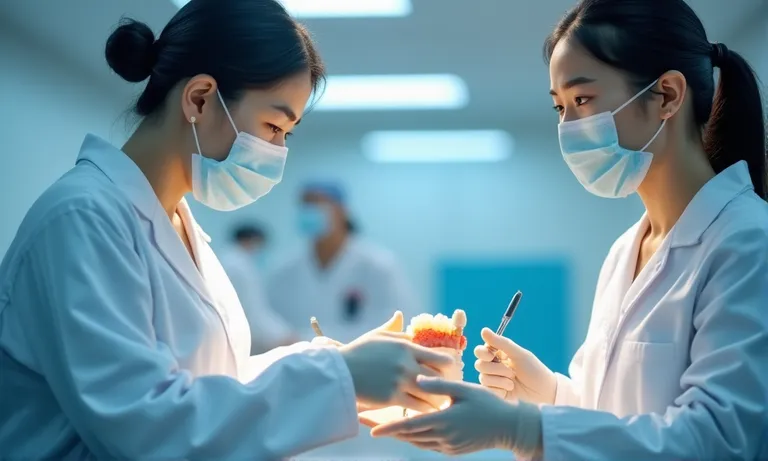
dental-lab-remake-communication-process
How does the lab confirm root cause before approving a remake?
Confirmation begins with verification. Labs need to distinguish whether the issue stems from design, manufacturing, or clinic-side inputs. This usually involves:
- Reviewing the original STL or design file
- Checking production logs (sintering time, margin detection mode)
- Comparing with the original Rx and shade instructions
- Requesting photos or intraoral scan overlays to identify clinical variances
Raytops uses a structured case review form that logs these inputs and assigns a provisional remake classification before final resolution. This approach reduces back-and-forth and sets clear expectations on outcome responsibility.
Are clinical photos or scan reviews part of the issue resolution?
Yes—visuals are often the most decisive evidence. Labs may request:
- High-resolution intraoral photos to assess margin finish line
- Prep comparison images (pre/post scan)
- Bite scans or occlusal view exports to evaluate contact points
- Shade tab verification photos with color reference cards
When documentation is incomplete, the lab may pause remake approval until clarity is achieved—this protects both parties from misjudgments and helps identify if remake is truly the optimal solution versus adjustment.
Is there a clear point of contact for urgent remake cases?
For complex or urgent remakes, knowing who to contact is critical. Labs should designate a dedicated remake liaison—often a senior technician or case manager—who can:
- Review the issue live (via screen share or WhatsApp photos)
- Coordinate remake priority in production queue
- Answer material or design feasibility questions in real-time
At Raytops, clients are given a specific case handler per region. This makes communication direct and avoids the frustration of repeating case context across teams or time zones.
How Can Labs and Clinics Work Together to Reduce Remakes?
Reducing remake rates isn’t just about lab quality—it’s a shared responsibility. The most reliable crown and bridge outcomes often come from proactive collaboration between clinics and labs, especially in early-stage case planning and first-time orders.
Labs and clinics can significantly reduce remakes by aligning early on margin clarity, scan detail, and case expectations. Standardized communication protocols and joint QA tools are essential for minimizing first-time errors.

dental-lab-clinic-collaboration-checklist
How do Rx quality, impression accuracy, or scan detail impact remake rates?
Inconsistent or incomplete input data is one of the most common remake triggers. Labs routinely encounter:
- Margins not clearly visible in intraoral scans
- Missing Rx fields (e.g. material, shade, contact design)
- Scan artifacts or prep line distortion due to moisture
- Poor occlusal clearance not noted in the order
From Raytops’ experience, nearly 35% of remake discussions involve ambiguous margin data or unclear Rx forms. Encouraging clinicians to review scans before submission and using digital checklists can reduce this risk substantially.
What shared protocols can labs and clinics adopt to reduce first-time errors?
A structured approach helps. Here’s a comparison of typical coordination failures and effective replacements:
| Common Friction Point | Collaborative Fix |
|---|---|
| Incomplete Rx form | Use digital Rx templates with mandatory fields |
| Vague shade instructions | Include tab-based shade photos with natural light reference |
| Last-minute design changes via email | Route changes through platform-based annotations (e.g., 3Shape) |
| Margins unclear due to poor isolation | Use real-time scan preview + optional margin verification support |
| Unclear implant platform designation | Confirm abutment model & screw type during order review |
These practices reduce the ambiguity that causes remakes and build confidence on both sides.
Are there joint QA checklists or onboarding tools available?
Yes—and clinics benefit greatly from using them. Labs like Raytops offer onboarding toolkits that include:
- Margin line visibility guides
- Scan quality benchmarking examples
- Rx form best practices with annotated screenshots
- Pre-shipping photo approval checklists
By integrating these tools into clinic onboarding or SOPs, teams build habits that prevent repeatable mistakes. It’s not just about reducing errors—it’s about creating a culture of precision and mutual accountability.
What to Ask When Evaluating a Lab’s QA and Remake Processes
Choosing a lab isn’t just about price or speed—it’s about how they respond when things go wrong. A lab’s remake and QA systems are often the clearest reflection of their operational maturity, transparency, and commitment to long-term collaboration.
When evaluating dental labs, procurement teams should ask specific, verifiable questions about remake tracking, QA documentation, and resolution protocols. This helps differentiate surface-level promises from process-driven reliability.
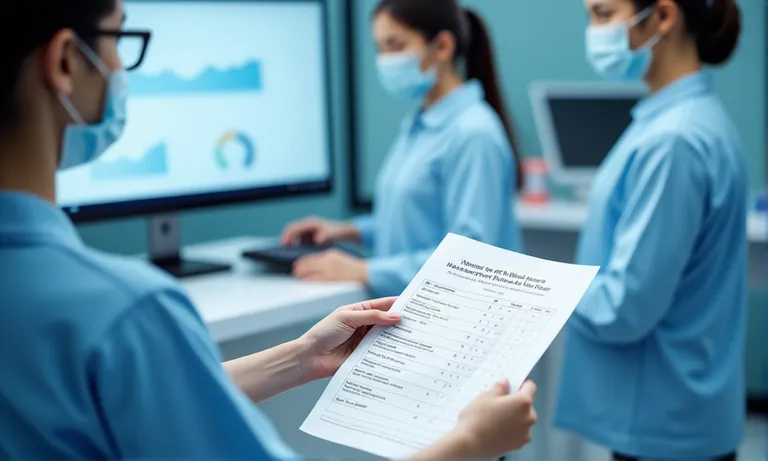
Image
ALT: dental-lab-qa-remake-evaluation-checklist
Do they share remake rate benchmarks or QA metrics transparently?
Transparency builds trust. Labs that regularly monitor their own remake data—and are willing to share it—signal process maturity. Ask questions like:
- “What is your 12-month remake rate for crown and bridge?”
- “Do you differentiate between remake causes (lab vs input error)?”
- “Can you provide monthly QA trend reports?”
Labs like Raytops maintain internal thresholds (e.g. <3.5% remake rate on zirconia cases) and review these monthly with key accounts. While no lab is perfect, visibility into metrics is a mark of credibility.
Can they provide sample reports of past remake resolution processes?
Look for evidence of how issues are documented, traced, and closed. A complete remake report should include:
- Initial issue trigger (e.g. margin mismatch)
- Review steps taken (scan/photo/files reviewed)
- Determined cause (design, input, material)
- Resolution time and shipping date
- Prevention action if applicable
Seeing these workflows shows the lab doesn’t just “redo”—they resolve and learn.
How is remake handling incorporated into the overall client service model?
This is about more than policy—it’s about culture. Ask:
- “Do you have a dedicated case manager for remake issues?”
- “How do you track case resolutions across teams or shifts?”
- “Is there a single system for recording communication threads, case files, and remake outcomes?”
Labs with shared platforms (e.g. 3Shape Inbox, LabStar, custom CRMs) can offer end-to-end visibility. Raytops assigns a regional case lead for each client account, ensuring remake handling aligns with that client’s service expectations—not just internal factory routines.
Conclusion
Remake rates in crown and bridge workflows are more than a statistic—they’re a signal. They reveal how well a lab manages precision, collaboration, and accountability across the entire production cycle. For procurement professionals, understanding the true cost of remakes means looking beyond surface-level promises to examine quality controls, documentation systems, and communication transparency.
Labs that proactively log remake causes, offer structured reports, and invest in client-side training don’t just reduce do-overs—they build operational trust. As an overseas dental lab, we’ve seen how shared protocols, pre-submission alignment, and accessible QA data can drastically reduce first-time errors and rework costs. In this industry, consistency isn’t accidental—it’s designed.


